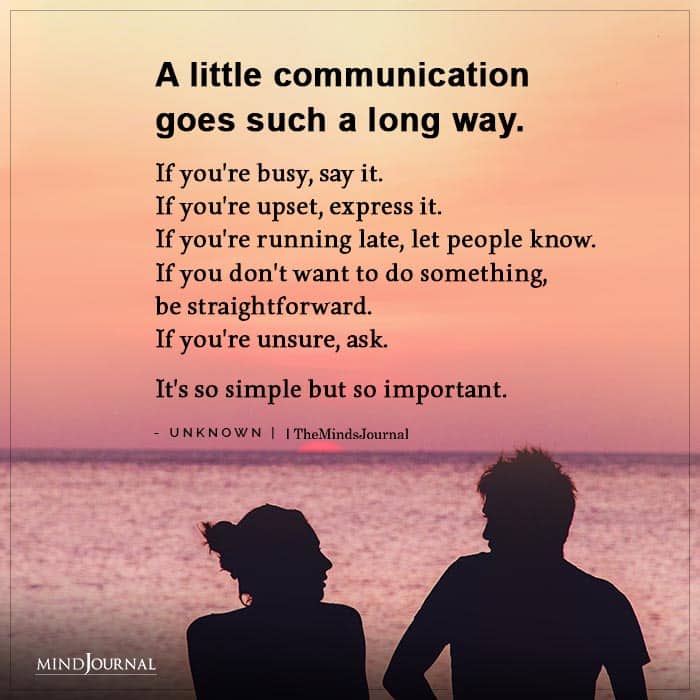If you are thinking about how to improve your relationship, then you have come to the right place. How to better communicate with your partner? Communication is crucial to building a healthy relationship, and this article is going to talk about that. Let’s explore how to have better communication with your partner.
KEY POINTS
- The three keys to communication are speaking openly, listening empathically, and reflecting back.
- We usually skip reflection, so the speaker does not know if they have been heard.
- A simple practice of reflection can build this skill.
Does your partner listen to you as well as you wish? As often as you wish? Do they listen at all?
Here’s a harder question: Do you listen to your partner as well as they wish? As often as they wish? At all?
Are you raising a child with someone—either together or as ex-partners—and have trouble being on the same page? Or even in the same book?
Whether you are just getting to know one another, newlyweds, new parents, or long-time partners, a simple reflection technique can dramatically improve communication in your relationship.
Related: 6 Ways To Improve Communication In A Relationship
6 Minutes To Improve Your Relationship
3-2-1
Just as you (should have) learned in kindergarten, everything goes better when you take turns. The 3-2-1 technique is no different. One big plus is that the turns are only six minutes long. And even better, you don’t have to keep quiet for the whole six minutes!
I’m not suggesting it is always easy to be in communication with someone for six whole minutes, but it is good to know that the conversation won’t go long into the night.
Step 1
Whoever goes first speaks for three minutes. Use a timer. The other person listens silently.
Speak from the heart about whatever is on your mind, or whatever you wish to share. When the timer goes off, finish the thought in just a few words, don’t sneak in extra time. It is tempting to keep going because, of course, you have more than three minutes worth of things to say!
And you have a person really listening, for a change. But stop when the timer goes off. That is key to this technique. You will see that it is better to have a few statements fully heard and reflected than to talk and talk with no listening and no reflection.
The listener listens with their whole heart, not on alert for how to score points or win an argument. Just listen.
It is highly recommended to practice several times with casual or non-threatening topics before you try it with anything combustible. It’s hard to learn and practice something new while speaking and listening to the most difficult things you have to talk about.
You can also practice with a friend who doesn’t trigger you as much as your partner or ex-partner.

Step 2
After the first timer goes off, set it again for two minutes. The listener uses that time to reflect back what they heard. They can use exact words or a paraphrase, but don’t make interpretations or leaps of judgment.
Stop reflecting when the timer goes off.
This is not a reflection: “You said you don’t care where we go to eat, but I know you really do care.”
This is a reflection: “I heard you say you don’t care where we go to eat.”
It is also not a reflection to lash out with an emotional reaction to what you heard. These are not reflections: “How dare you say that!” “I knew you were going to say that!” “That’s not what happened!” “You sound just like your mother!”
Related: 3 Reasons Why Communication Is Crucial For Sustained Intimacy
Step 3
Set the timer again for one minute. The original speaker responds in that minute to the reflection they received. This could be something like, “Thank you for listening, you really heard me,” or “You got some of it, but you missed the part where I said xyz,” or “I’m not sure you understood, let me repeat the key point.”
It’s best not to open up a brand new topic in this last minute, because there isn’t space for it to be reflected back.
Steps 4-6
Switch roles and repeat the three first steps. Set the timer for three minutes again, with the original listener speaking first this time.
The new listener listens for three minutes, then takes two minutes to reflect back what they heard.
The original speaker of this round then takes one minute to respond to the reflection.
Now what?
The goal of 3-2-1 is not instant resolution of a longstanding conflict, or sudden agreement and warm fuzzy vibes. The goal is simply to experience being heard, and to experience thoughtful listening.
So many conversations involve little or no real listening, and we just repeat ourselves or escalate our volume or language to try to be heard. That just makes it harder for the other person to listen.
After 3-2-1, the hope is that problem-solving conversations and conflict resolution can be much smoother and more effective, because of how you’ve practiced speaking and listening to one another.
This practice ripens over time
It is best to start with one round each way at first. If you practice a while and like the technique, you might go a few rounds at one sitting, or you might set up a regular schedule for 3-2-1 listening.
One or both partners may need some practice (or a lot of practice) before they can reflect accurately without interpretations, emotional reactions, or arguments.
Related: How To Improve Your Active Listening Skills? 10 Easy Ways To Be A Better Listener
If you can, appreciate the moments of good listening and good reflection, instead of pouncing on the failures. That will help the other person improve.
Try it! 3, 2, 1, go!
Want to know more about how communication can improve your relationship? Check this video out below!
Sign up for Lawrence J. Cohen’s newsletter by emailing “subscribe” to newsletter@playfulparenting.com.
Written By Lawrence J. Cohen Originally Appeared On Psychology Today










Leave a Reply